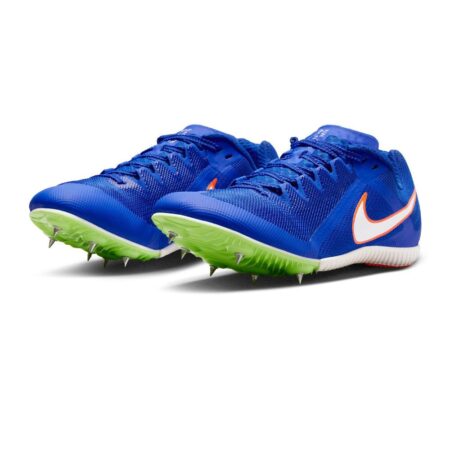In the dynamic world of athletics, understanding the intricate mechanics behind each stride can be the difference between victory and defeat. The latest editorial, “The Biomechanics of Competitive Gait: Sprinting, Hurdling, Distance Running and Race Walking,” published in Frontiers, offers a comprehensive exploration into the science that propels athletes forward. By dissecting the unique demands and movements involved in various competitive gait disciplines, this piece sheds light on cutting-edge research that is shaping training methods, injury prevention, and performance optimization across the sport. From explosive power in sprinting to the endurance-driven efficiency of race walking, the editorial sets the stage for a deeper appreciation of the biomechanical artistry at play in track and field events worldwide.
Advancing Performance Through Biomechanical Analysis of Sprinting and Hurdling
Cutting-edge biomechanical analysis has revolutionized how athletes and coaches approach sprinting and hurdling techniques. By utilizing high-speed motion capture and force plate technology, researchers can dissect the intricate interplay of limb movements, ground reaction forces, and joint angles critical to explosive performance. These insights have identified key performance indicators such as stride frequency, ground contact time, and hurdle clearance dynamics that are directly linked to race outcomes. Furthermore, data-driven adjustments have enabled tailored training programs that maximize power output and efficiency, reducing injury risks while pushing the limits of human speed.
The integration of wearable sensors and AI-driven analytics is paving the way for real-time feedback systems, allowing athletes to make micro-adjustments during training sessions. Some of the primary biomechanical factors contributing to success in sprint hurdling include:
- Optimal hip flexion and extension for rapid leg turnover
- Minimized vertical displacement to conserve forward momentum
- Efficient hurdle clearance angle to reduce air time
Below is a comparative overview of sprint and hurdling mechanics derived from biomechanical studies:
| Metric | Sprinting | Hurdling |
|---|---|---|
| Stride Length | 1.8 – 2.2 m | 1.6 – 2.0 m |
| Ground Contact Time | 80 – 100 ms | 90 – 110 ms |
| Vertical Displacement | 4 – 6 cm | 6 – 8 cm |
| Hurdle Clearance Time | N/A | 120 – 140 ms |
Optimizing Endurance Techniques in Distance Running for Competitive Edge
Endurance running demands finely tuned physiological and biomechanical adaptations that can distinguish an elite athlete from a competitive amateur. Recent biomechanical analyses underscore the importance of optimizing energy efficiency through improved stride mechanics, muscle-tendon elasticity, and respiratory synchronization. By focusing on minimizing vertical oscillation and promoting a consistent, smooth ground contact time, distance runners can reduce wasted energy and delay fatigue onset. Furthermore, embracing a cadence that balances oxygen consumption and muscle fatigue enhances overall endurance capacity.
Practical strategies for maximizing performance involve integrating targeted training techniques alongside biomechanical feedback. Key components include:
- Dynamic stretching: improves muscle pliability and stroke length.
- Plyometric exercises: enhance tendon recoil and running economy.
- Periodized respiratory drills: promote efficient oxygen uptake.
- Real-time gait analysis: allows for corrective adjustments during training.
| Technique | Biomechanical Benefit | Endurance Impact |
|---|---|---|
| Increased Cadence | Reduces Ground Contact Time | Improves Oxygen Efficiency |
| Midfoot Strike | Optimizes Shock Absorption | Delays Muscle Fatigue |
| Core Stability Training | Enhances Postural Control | Maintains Form Over Distance |
Enhancing Race Walking Efficiency with Innovative Biomechanical Strategies
Adopting cutting-edge biomechanical techniques is revolutionizing race walking by significantly improving athletes’ efficiency and endurance. Recent studies emphasize optimizing joint kinematics and muscle activation patterns to minimize energy expenditure during long competitions. Key innovations such as real-time motion capture and wearable sensor technology have facilitated precise adjustments in stride length and cadence, enabling race walkers to maintain optimal ground contact times while adhering to regulatory form constraints.
Key biomechanical strategies enhancing race walking performance include:
- Targeted pelvic rotation to maximize stride efficiency
- Refined foot strike patterns reducing impact forces
- Dynamic trunk stabilization to promote balance and forward momentum
- Customized strength training aligning muscular output with gait demands
| Biomechanical Focus | Impact on Efficiency | Performance Gain |
|---|---|---|
| Pelvic Rotation | Improves stride length | +3.5% speed |
| Foot Strike | Reduces ground reaction forces | -12% energy cost |
| Trunk Stabilization | Maintains balance and momentum | +2.1% endurance |
| Biomechanical Focus | Impact on Efficiency | Performance Gain |
|---|---|---|
| Pelvic Rotation | Improves stride length | +3.5% speed |
| Foot Strike | Reduces ground reaction forces | -12% energy cost |
| In Retrospect
In sum, this editorial sheds new light on the intricate biomechanics underpinning competitive gait across sprinting, hurdling, distance running, and race walking. As research in this evolving field continues to advance, athletes and coaches alike stand to benefit from deeper insights that could enhance performance while reducing injury risk. With Frontiers leading the discourse, the intersection of science and sport promises to propel competitive gait analysis into an exciting new era. |





